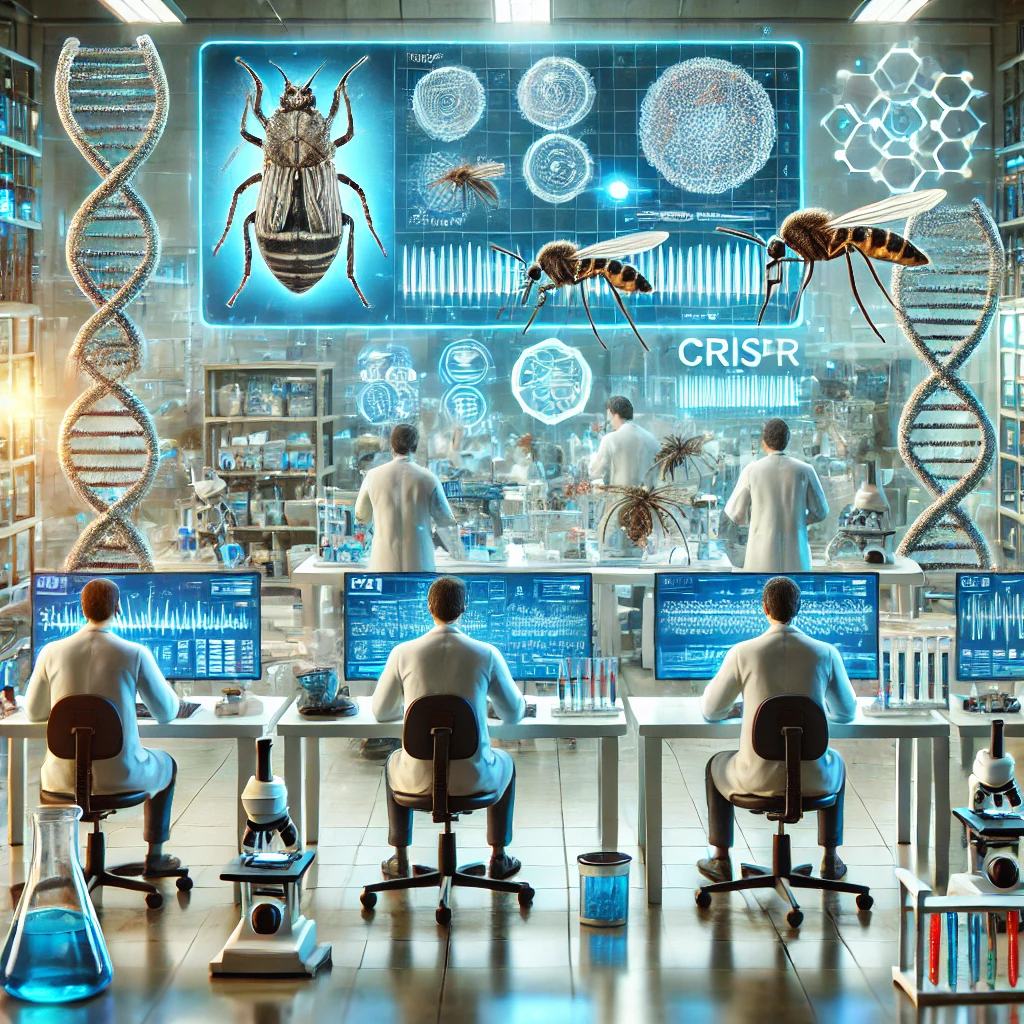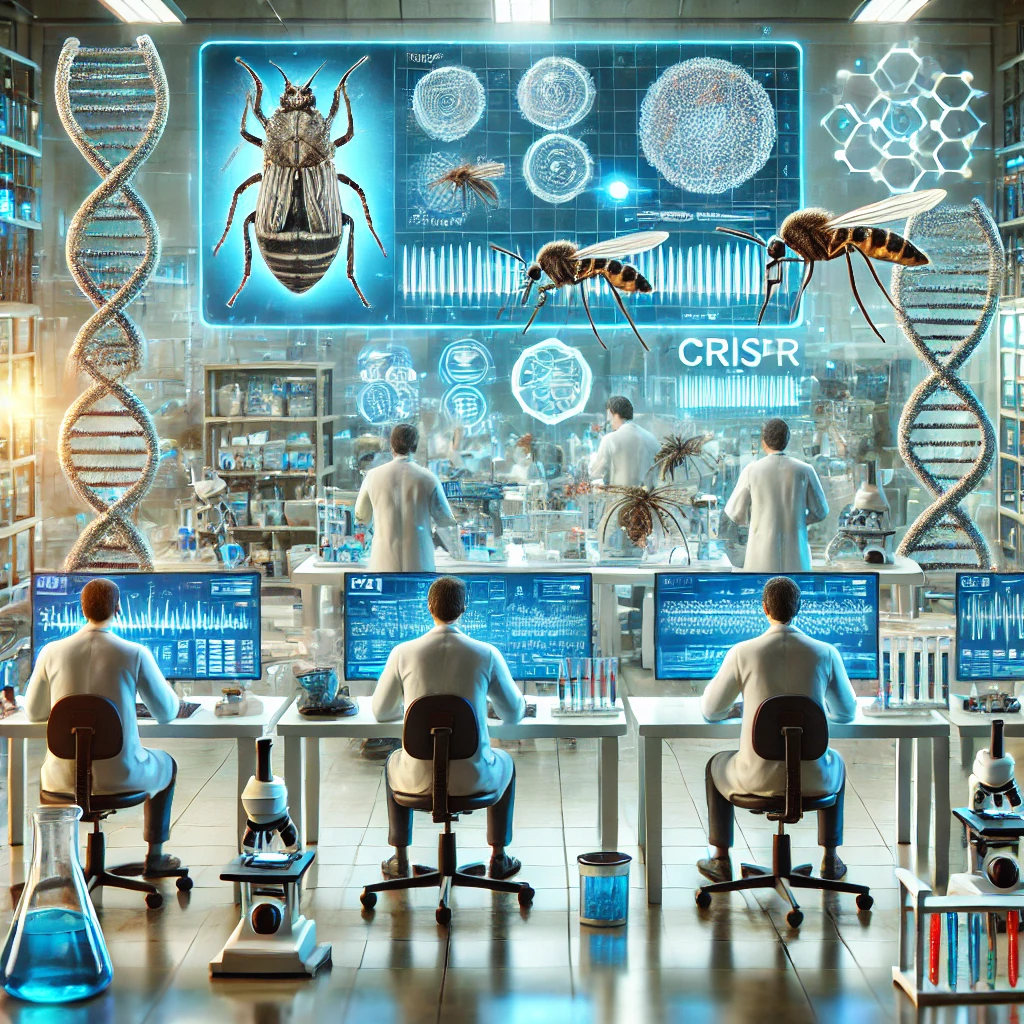
Introduction
Gene editing technologies, such as CRISPR/Cas9, are revolutionizing pest management by targeting the reproductive capacity of invasive pests. This innovative approach aims to control pest populations more effectively and sustainably by directly altering their genetic makeup. By reducing the reproductive potential of these pests, gene editing offers a powerful tool to mitigate their impact on ecosystems and agriculture.
Benefits of Gene Editing for Pest Control
- Targeted Approach: Gene editing allows for precise modifications to the genetic code of invasive pests. By specifically targeting genes responsible for reproduction, such as fertility or sex determination genes, scientists can disrupt the reproductive processes of pests. This targeted approach reduces unintended effects on non-target species and minimizes ecological disruptions.
- Sustainable Pest Management: Traditional pest control methods often rely on chemical pesticides, which can have harmful environmental impacts and lead to resistance. Gene editing provides a sustainable alternative by addressing the root cause of pest proliferation—reproduction. By reducing the number of offspring produced, gene editing helps manage pest populations over the long term with fewer chemical inputs.
- Reduced Pest Population Growth: By decreasing the reproductive capacity of invasive pests, gene editing can significantly slow population growth. This control method helps prevent pests from reaching damaging levels, reducing their impact on crops, livestock, and natural habitats. Lower pest populations also decrease the need for frequent and intensive pest control measures.
- Minimized Chemical Use: Gene editing reduces the reliance on chemical pesticides, which can be harmful to humans, wildlife, and the environment. With fewer chemicals needed, the risk of pesticide resistance and pollution is diminished. This approach aligns with integrated pest management strategies that emphasize environmental stewardship and safety.
Challenges and Considerations
- Ethical and Regulatory Concerns: Gene editing in pests raises ethical and regulatory questions. The potential impacts on ecosystems and non-target organisms must be carefully evaluated. Regulatory frameworks need to be developed to ensure that gene-edited pests are tested thoroughly and monitored for unintended consequences before widespread deployment.
- Technical Limitations: While gene editing offers precise control, the technology is not without limitations. Achieving efficient and consistent gene modifications in pests can be challenging. Researchers must overcome technical hurdles related to the delivery of gene-editing tools and ensure that modifications are stable and heritable.
- Ecological Impact: The ecological impact of releasing gene-edited pests into the environment needs thorough assessment. While the goal is to reduce pest populations, unintended consequences on ecosystems and non-target species must be considered. Comprehensive studies are required to evaluate the long-term effects of gene-edited pests on biodiversity and ecosystem health.
- Public Perception: Public perception of gene editing in pests can vary. There may be concerns about the safety and ethics of manipulating pest genetics. Transparent communication and public engagement are essential to address these concerns and build trust in gene editing technologies for pest control.
Future Directions
- Advancements in Gene Editing Technology: Ongoing advancements in gene editing technologies will improve the precision and efficiency of genetic modifications. Innovations in CRISPR/Cas9 and other gene-editing tools will enhance the ability to target specific reproductive genes in pests and increase the success rates of genetic interventions.
- Integration with Other Pest Management Strategies: Gene editing can be integrated with other pest management strategies for a more comprehensive approach. Combining gene editing with biological control, habitat manipulation, and monitoring can enhance overall pest control effectiveness and sustainability.
- Development of Multi-Target Approaches: Research into gene editing strategies that target multiple reproductive genes or pathways could provide more robust pest control solutions. Multi-target approaches may increase the likelihood of successfully reducing pest populations and mitigating resistance development.
- Global Collaboration and Regulation: International collaboration and the development of harmonized regulatory frameworks are crucial for the safe and effective use of gene editing in pest management. Sharing knowledge, research findings, and best practices will support global efforts to address invasive pests and protect ecosystems.
Conclusion
Gene editing presents a promising approach to reducing the reproductive capacity of invasive pests. By targeting specific genes involved in reproduction, this technology offers a sustainable and precise method for pest control.

